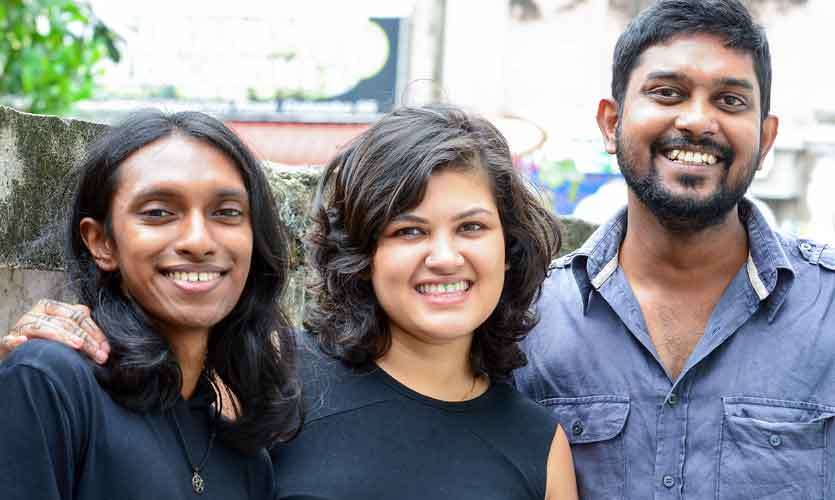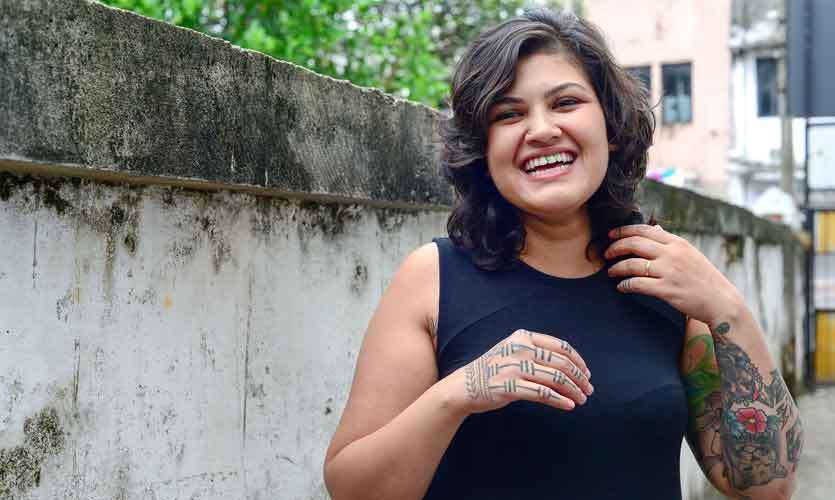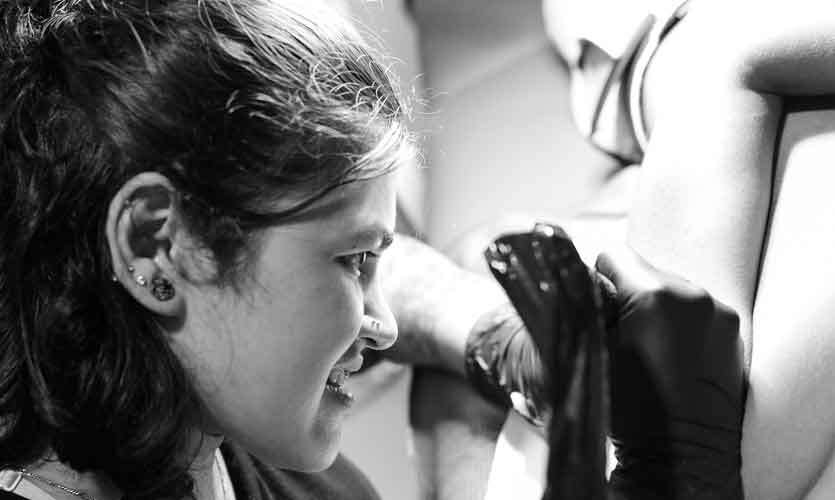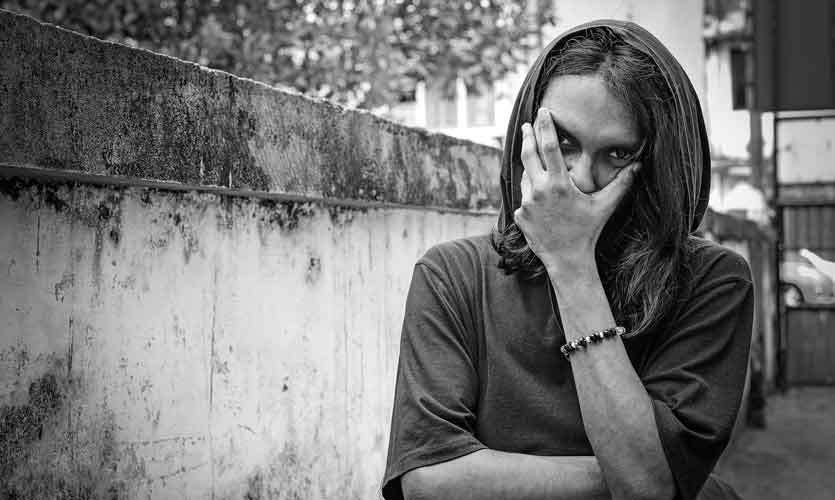
Jan 15 2019.
views 1959Pain, a pain that scratches across your skin is the first sensation that hits you when the cold needle touches your skin and then all of a sudden your skin becomes numb to the pain. The best part about the numbness, at least for me, is that you can still feel the scratching of the needle – which is irritating – while the experience allows you to be transported on a near out-of-body experience where you can see what is going on. There is also a sense of excitement as to how this one is going to turn out – which is actually the best part.
It has been a while since I last got inked and this time when I did, I realised how much I had missed it. It is strange to miss a needle scratching the surface of your skin but that’s part of the experience of getting tattooed. The end result is quite amazing because once the tattooing is done and the pain is over, you end up with a work of art on your body.
The first time I got a tattoo I thought all I had to be mindful of was a clean needle but three tattoos later I have come to learn that there’s a lot more to tattoo hygiene than just a clean needle. Once you pick your design the artist should clean and sterilize the work station while also covering it in plastic wrap and tissue so as to not allow cross contamination. Wearing a pair of gloves the artist will clean your skin and place the design on it and it is only then that the ‘inking’ begins.
This time I chose to go to Soul Ink Studio and the talented bunch behind the studio are Uditha Rangana, Roanna Webster and Kyle Sampath (Valentine). Passion is the common element that drives the trio and the result – beautiful works of art on your body.

We worked with both Udith and Kyle and they were extremely professional while maintaining the utmost levels of hygiene right through the process – after all, tattooing means you are dealing with blood, and an open wound.
A tip Uditha gives his clients is to breathe slowly as this allows your muscles to be less tense resulting in the pain being more tolerable.
“What I want to do is to give more information so people know what we have to offer,”
Uditha explained adding,
“Roanna is possibly the only professional Sri Lankan female tattoo artist – to be a professional you have to finish an apprenticeship and to do that, you have to work in a studio and get a proper apprenticeship but we don’t have those options here so Roanna has done that in the US.”

“I was based in the US and I started learning to tattoo in Sri Lanka. I did a three-month stint (an apprenticeship) here and went to the US. I wasn’t tattooing at the time – I was still learning so I went the US, found an apprenticeship in a studio and continued working there for around two years,”
she said adding,
“I then felt I wanted to bring ‘this’ back home, and that I wanted to feel like making a difference back home!”
“It just kept coming to me. I got tattooed by a few different artists who kept saying, I should start tattooing and I wondered why they would say so – in fact three different artists approached me about it and I just didn’t understand why and it took me about a year before I decided that I was ready to learn,”
Roanna said,
“Once I started learning I really loved it!”
There is far more to becoming a tattoo artist than just picking up a machine and tattooing someone. Just like any profession you have to learn it correctly.
“In the US you have to do a blood borne pathogen course – it is an online course which teaches you about blood-borne diseases and hygiene and how important it is because we are dealing with open wounds and blood. We don’t have such options here, and you have to register with a shop so I have both of those certificates and I keep them up-to-date annually,”
Roanna explained. She has also learned how to do tattoo removals – the course for this and the machine is expensive so it will take some time before she can start on it at the studio.

As with any profession, there are challenges but when it comes to tattooing you are working on someone’s skin so it can be challenging and Roanna says,
“I am still learning, in fact, you learn everyday and I’m still only really comfortable with a few styles and I think as I progress in my career I can go for a wider range. I like to work on American traditional designs as well as black work and geometric designs but I don’t really like to do black and grey or realism so maybe down the line I’d like to learn something more in that area.”
“You keep learning, that’s why I really love this because no matter how good you are, no matter where you go, you can always continue to learn from someone – you can learn something art-wise, tattoo-wise anything, really!”
When you are being tattooed the pigments go into the dermis and our antibodies think the ink is a foreign object and they attack the ink but since the ink particles are far bigger than the antibodies they can’t carry all the pigments so some of the antibodies die and create a wall around the pigment which is how the ink holds on the skin.Uditha goes on to explain that when you are exposed to the sun or undergoing laser treatment these particles start breaking off which is why the sun isn’t ideal for tattoos – the result, the tattoo fades in time so the more you expose yourself to the sun the faster your tattoo fades.
He also explains that there are three layers in your skin – the epidermis, hyperdermis and the dermis so the ink has to go into the dermis. If you go for the epidermis the tattoo fades really fast because that’s the top layer of the skin and also where the melanin is. The hyper ermis has oil so if you put ink on your hyper dermis the design will become blurry because the needle went too deep.
What Soul Ink specialises in are custom tattoos. This means, you come to them with an idea and the artists will draw up a tattoo in line with this idea. Communication, Uditha says is vital between the artists and the client because that is the best way to bring out the best tattoo. After all, You are getting inked on Your skin and you need to make the most of it.
“Custom tattoos are really new to Sri Lanka and I’d like to think that we are the ones who do these types of tattoos properly,”
Uditha says adding,
“Most often people come to us with a design from the internet – why would you want something off the internet when you could have something original that could add value to your body – why would you do that when you could be creative and have something personal – No matter how simple or elaborate the tattoo, it is a great feeling to have a story behind your tattoo! So the idea is to get something original and something that means something to you.”
There are three types of designs – flash designs which are tattoos designed by tattoo artists for sale or ones you can get from an artist, realism – a realistic object, like a portrait and custom work. So remember to put a lot of thought into the design you want and get what is best suited for you.
Also remember to talk to the tattoo artist about aftercare, as it is vital in making sure your tattoo heals well. My tattoo was covered with a clear plaster called ‘derm-wrap’ and I was asked to wash the area with a mild soap, ideally baby soap and pat it dry with a paper tissue. After three to four days I was asked to remove the plaster and wash it once again with a mild soap and water, pat dry and apply coconut oil or cocoa butter – for a week. Coconut oil, which can be found in any Sri Lankan household, worked brilliantly and my tattoo healed in no time. There was no itching or infection.
“Kyle was here for about a year or two and I didn’t even let him touch a tattoo machine because I knew what mistakes I had made by using a machine too soon,”

Uditha explains adding,
“I got a machine and started working on skin too early which is very wrong and I screwed up a lot of tattoos.”
So Uditha decided that if he were to have an apprentice he would not let him/her go on the same path,
“After a year or so when Kyle would ask me if he could work with a machine I would always tell him to be patient as patience is vital in this industry.”
“When I met Uditha I realised that tattooing is what I wanted to do and I am extremely happy with the choice I have made,”
Kyle works as an apprentice at the studio and has a background in design, and in spite of being an apprentice, his work is pretty impressive.

The passion, and the fact that these guys work as a team has resulted in them coming up with some fine work. So it might be worth heading over to their studio to have a look at what they may have to offer you, if you plan on getting inked!
Facebook: https://www.facebook.com/soulinkstudio/
Instagram: https://www.instagram.com/soulinkstudio/?hl=en
0 Comments